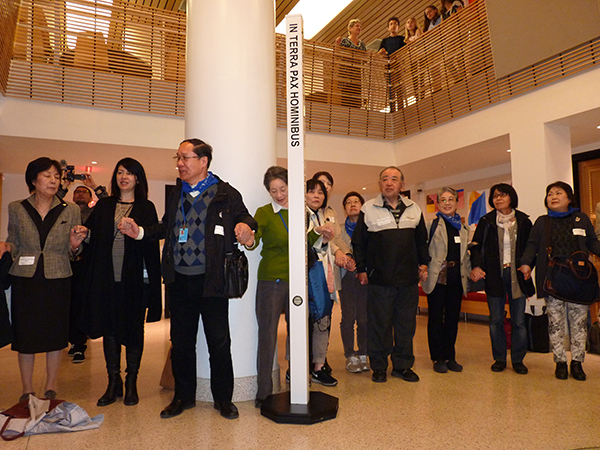Hiroshima and Nagasaki victims share their stories with Brooklyn students
Peace Pole dedicated at Brooklyn Friends School

Seventy years after the U.S. dropped atomic bombs on Japan, Hiroshima and Nagasaki survivors of the blasts visited Brooklyn Friends School to dedicate a Peace Pole, and speak to students about the effects of atomic weapons. Photo by Mary Frost
Seventy years after the U.S. dropped atomic bombs on Japan, elderly Hiroshima and Nagasaki survivors of the blasts visited Brooklyn Friends School (BFS) in Downtown Brooklyn to dedicate a Peace Pole, and speak to students about the horrendous effects of atomic weapons.
A Peace Pole is a slim monument that displays the message and prayer “May Peace Prevail on Earth” in different languages on each side. Participants from the U.S. and Japan joined hands around the monument and prayed for peace.
The average age of the survivors – called Hibakusha, or “bomb-affected-people” in Japanese – is 79, so it is likely that today’s students are among the last to hear their first-hand testimony, the organizers, Hibakusha Stories, said.
